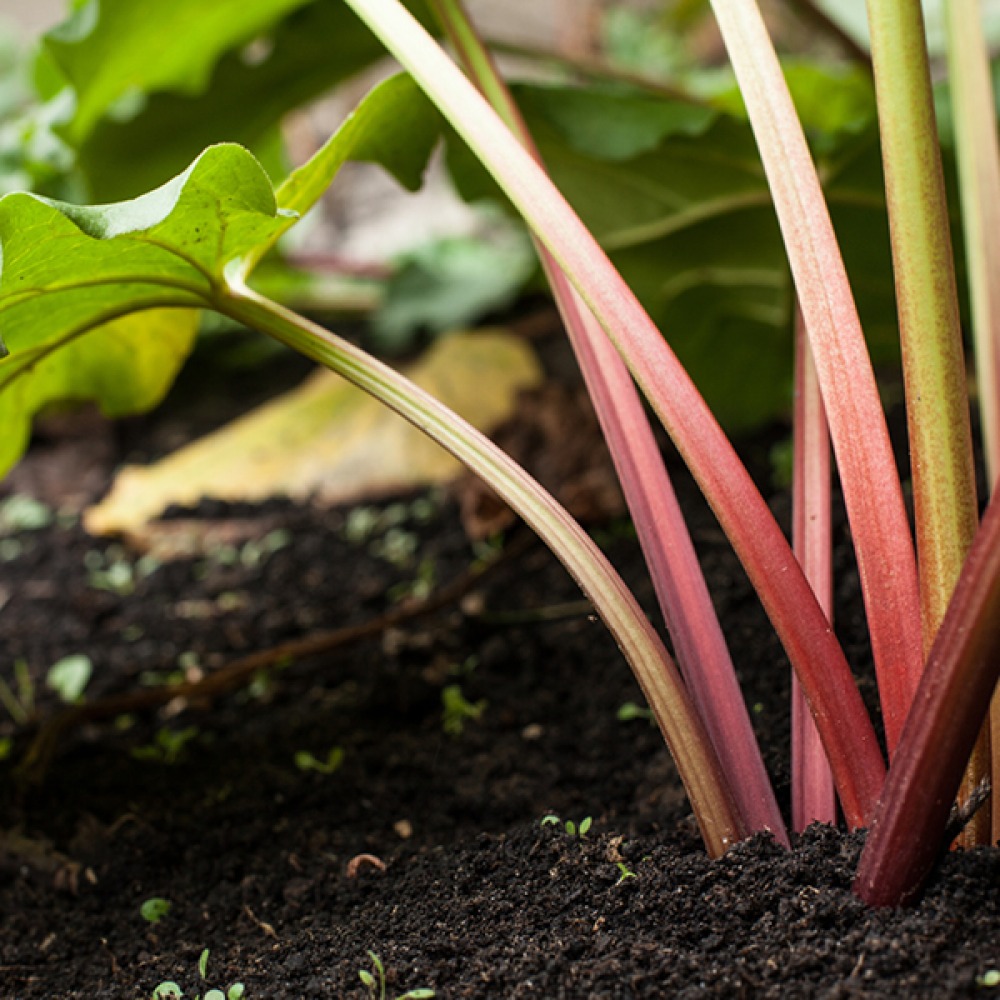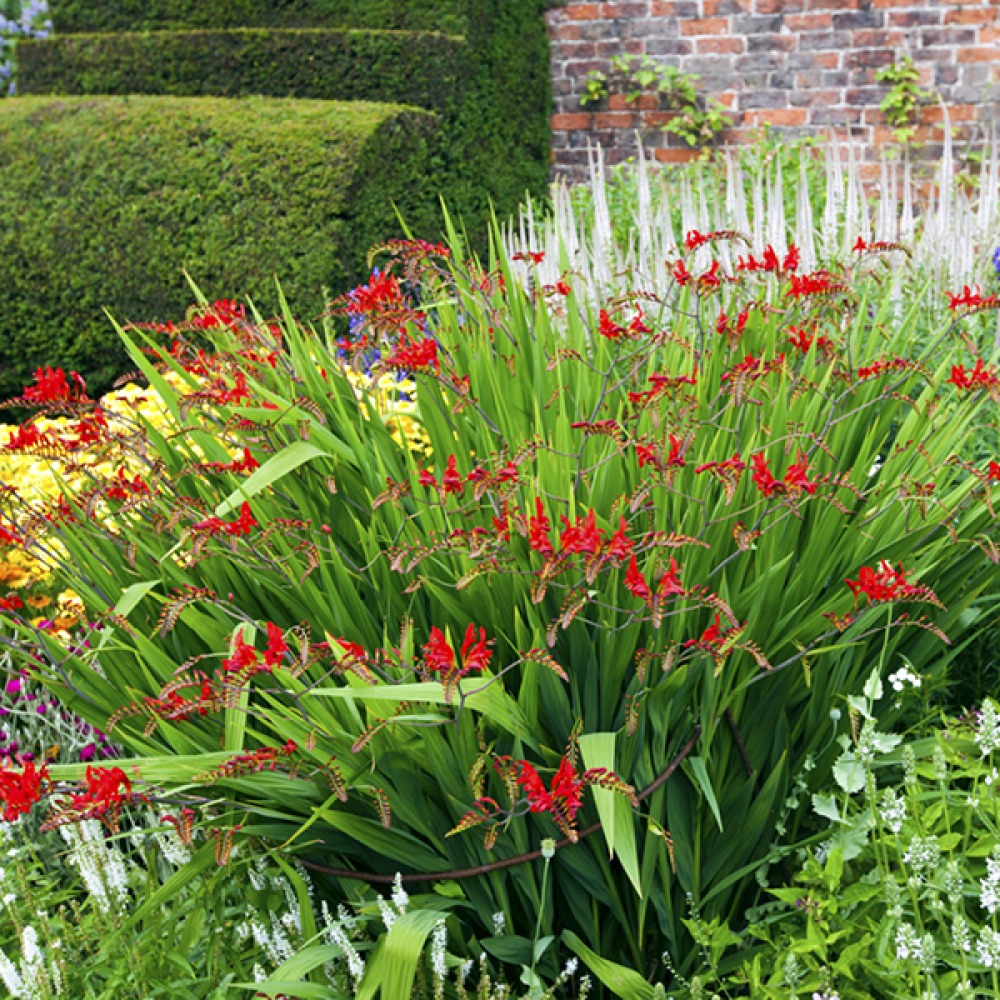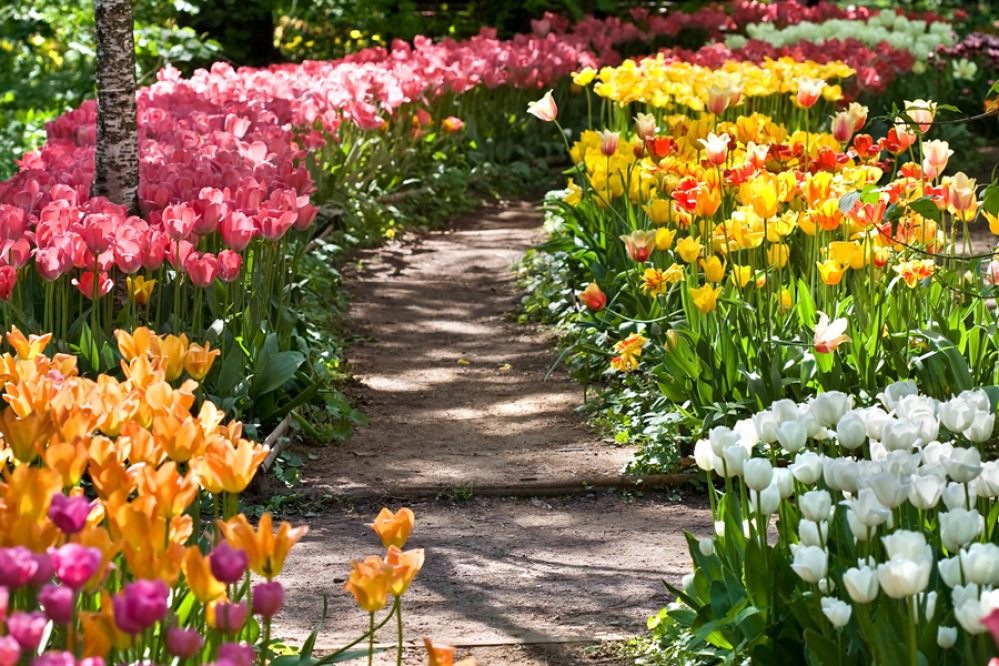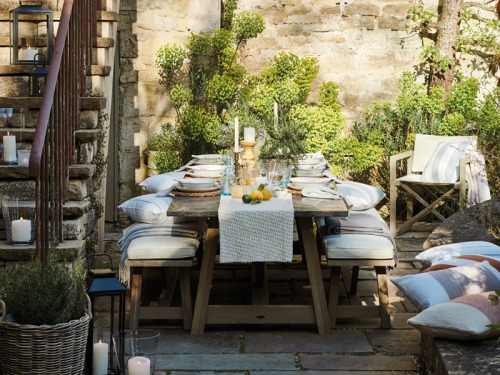What to Do in the Garden in April

Living North is delighted to introduce our new columnist, gardening expert Ross Pearson
It may technically already be spring, but it isn’t until April arrives that spring truly announces itself in the garden. One morning you will wake up and step outside to a completely new world, where birds are singing full blast, the sky is a rich blue and you realise you don’t actually need your thermals anymore. I’m not sure you can beat the feeling of that first day in the back garden with a cup of tea and feel the warmth of the sun recharging your depleted winter batteries.
That vernal energy ignites something inside us gardeners and makes you automatically reach for the spade and fork, the same way that the swallows and martins instinctively head back to the UK. So, embrace the call of the outdoors and let’s dive into the gardening tasks ahead.

Indoor seed sowing
It’s a bit late to be sowing tomato and pepper seeds, but if you have missed the window, sow them in a heated propagator or on a sunny, warm windowsill to push them along. Cucumbers, chillies, courgettes and pumpkins can all be sown now in a greenhouse. For larger seeds, sow one seed to a pot or for smaller seeds, sow a half seed tray or small pot that can be pricked out later. If you did manage to sow your tomatoes and peppers on time, carefully prick out seedings and move them to their own 8cm pot before they become leggy in growth. Carefully lift the plant using a seed label and hold only by the leaves. Make a hole in the compost with a dibber and gently lower the seedling in, pressing in the compost and finally watering.
Outdoor seed sowing
Most soils will now be warm enough for a whole host of vegetables such as Brussels sprouts, cabbages, leeks, carrots, spinach, chard and radishes. When planting peas, rake the bed out to a fine, flat tilth and use a taut string line to act as a guide. Use a bamboo cane or hoe to make a drill roughly five centimetres deep. Place the seeds in the drill at 10 centimetre intervals and pull the soil back over before watering in well. For dwarf pea varieties, push branched sticks either side of the drill to act as supports and keep birds at bay. For taller varieties, create a large frame using pea sticks or bamboo canes and string.
Plant onion sets
Onions prefer to be planted in a bed in full sun with free-draining soil. For ease of weeding with a hoe, plant the sets in straight rows 30 centimetres apart with a gap of 10 centimetres between individual bulbs. Make sure you plant each set with a dibber rather than pushing the set into the soil as the basal plate damages easily, causing the bulb to die. Leave the tip of the set showing above the soil and firm the soil back around them. Water the rows and cover the bed with netting to stop birds from pulling every set out – I speak from experience!
Plant maincrop potatoes
By mid-April, the soil should be warm enough to plant out maincrop potatoes. They are hungry plants and to get the very best results, it is wise to plant them in soil enriched with well-rotted manure and blood, fish and bone meal. Plant in trenches 15 centimetres deep, at least 50 centimetres apart and space each tuber out by 30 centimetres to give them enough room to spread out. Leave the tubers in the trench uncovered until shoots begin to appear. Cover the shoots with soil and earth up as the tips continue to emerge. The potatoes themselves will grow above the planted tuber. If you are short on space, one third fill a deep container or bucket with 20 centimetres of compost and repeat the steps as above.
Harvest rhubarb
There aren’t too many things to harvest in April, but rhubarb certainly makes up for the lack of choice. Choose stems that are pale pink to deep red in colour and pull the stem away from the base of the plant rather than cutting it to avoid rotting. Rhubarb will keep throwing up new stems for weeks to come as long as you regularly harvest stems and make sure it is watered well.

Spring pruning
As a rule, we tend not to prune plants in winter to protect them from the damage of hard frosts. Now that the worst of the weather is behind us, it’s time to prune plants to set them up for the season ahead. Most hydrangeas can be pruned now, with the exception of climbing hydrangeas which should be tackled after flowering in summer. Remove the old flower heads that have done their job of protecting buds from frost. Remove the spent flowers from camellias and remove growth as needed to reshape its form. Herbaceous perennials such as Salvia ‘Amistad’ penstemon, fatsia and pittosporum should be checked to remove any damaged stems to allow fresh growth to take its place. Make sure not to prune plants that are about to flower such as wisteria, philadelphus and group two clematis.
Tidy up lawns
It’s more than likely that your beautiful lawn is looking less than perfect. Get on top of lawn health now by repairing bare patches with grass seed. Rake out any dead grass or moss, filling in areas with a topdressing of loam where needed. Choose a grass seed that is appropriate for your conditions and sow lightly on your prepared areas. Gently tamp the surface with a rake to ensure a good contact between the seed and soil. Water the area well and net, if possible, to stop birds feasting on the seeds before they germinate.
Weed the borders
As laborious a job as it appears, nothing has more of an impact on the overall look of a garden than a freshly weeded and forked border. Wherever possible, remove the weeds by hand with a trowel to remove all the roots, especially for perennial weeds such as dandelions. If the weeds are smaller and the sun is shining, hoe off the weeds and leave them on the surface to wither. Gently relieve surface compaction by working a fork over the soil to a depth of no more than 5cm. Break up any larger clumps of soil and rake out to create a smooth, even tilth.
Summer and autumn flowering bulbs
April is the perfect time to fill the gaps of borders or empty pots with summer and autumn flowering bulbs. Gladioli, lilies, begonias, nerines, crocosmia and colchicums are all ready to be planted out now the weather is warming up. Check over dahlia tubers and remove any soft areas before planting in containers. Keep indoors until lush, healthy growth appears, and any risk of frost has abated, usually in late May.
Lift and divide perennials
It doesn’t take long for the small plants you planted a year or two ago to outgrow their original space. Now that lush growth is visible, lift any perennial plants that are overcrowded or not in the right place. Divide the clumps with two forks back-to-back to tease out roots or in the case of more densely rooted plants, cut with a spade or a pruning saw. Ensure a good amount of root is taken along with each cutting and once the plant is out of the ground, don’t leave it too long before replanting or the plant will quickly suffer. Replant each division in a well dug over hole to the same level as previously planted and firm in well. Don’t forget to give everything a good watering as the roots will mostly be reliant on you bringing water to them for the first week or two.

PLANT OF THE MONTH
Tulip
Tulips are a staple of a spring garden for their multitude of vivid colours and spectacular forms. Introduced to Britain in the 16th century, tulips became a symbol of status and wealth with some varieties fetching the equivalent of £300,000+ today. ‘Tulip Mania’ may not mean as much today as it did back then, but their ability to add vibrancy in an otherwise muted garden is just as appreciated.
Plant
Superb in container displays planted during November in groups of 10 to 12. As a rule of thumb, always plant bulbs at a depth of three or four times their height in free-draining soil or fresh compost. Versatile in any position, from full fun to full shade tulips can tolerate hard winter frosts.
Care
Tulips are notorious for losing their vigour after the first year of flowering unless they are deadheaded after flowering and given a liquid feed. You have been warned!









